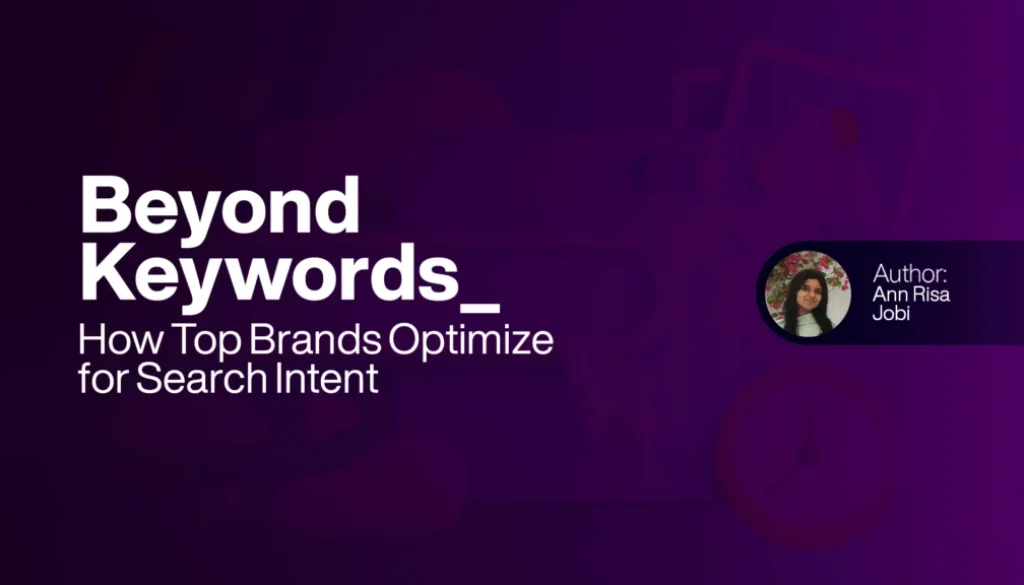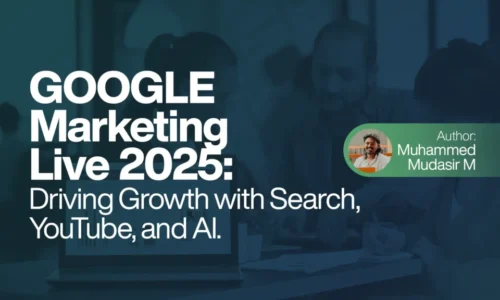Beyond Keywords: How Top Brands Optimize for Search Intent
Many brands still struggle with one frustrating problem: their content ranks, but it doesn’t perform. In a world where algorithms are getting smarter and audiences even more impatient, the brands that stand out online aren’t just the ones that appear in search,they’re the ones that decode user needs with clarity.
Welcome to the era of search intent, where understanding what someone wants matters more than what they type.
Table of Contents
What is Search Intent?
Let’s break it down.
Search intent is the “why” behind a search. Is the person trying to learn something? Buy something? Compare options? Or just looking for quick info?
Here’s the classic breakdown:
- Informational – “What is influencer marketing?”
- Navigational – “HubSpot blog login”
- Transactional – “Buy email marketing software”
- Commercial investigation – “Top-rated digital marketing tools for 2025”
But top brands? They go way beyond this basic classification
How Smart Brands Are Reading Between the Lines
Let’s look at what separates brands that rank from brands that resonate.
1. They Create for People, Not Just Pages
Brands like Ahrefs, Canva, or even Spotify for Podcasters don’t just answer a query—they anticipate what someone wants to see next. That might be a helpful video, a case study, or even a tool embedded into the page.
They design experiences, not just blog posts.
2. They Use SERP as a Crystal Ball
Want to know Google’s understanding of intent? Look at the search results. Are the top results blog posts, YouTube videos, product pages, or Reddit threads?
Smart marketers reverse-engineer this.
If someone searches “best AI tools for marketers,” and Google shows mostly listicles and not product pages, pushing your landing page won’t cut it. You’re not answering the intent.
3. They Don’t Rank Once; They Dominate the Whole Page
Big players like HubSpot or Neil Patel know one blog won’t always do the job. They repurpose one intent-driven topic into:
- A blog
- A YouTube video
- A downloadable checklist
- A guest post
- A mini-course
They own the search experience from all angles.
Quick Wins for Future-Focused Marketers
You don’t need a million-dollar team to start optimizing for intent. Here’s what helps:
- Google the query. See what’s ranking and why.
- Dive into the “People Also Ask” box to discover what your audience genuinely cares about.
- Match format to the moment. Is this best answered with a video? A list? A comparison table?
- Layer your content. Answer the main query and follow-up questions. Stay on the page, be helpful.
Final Thoughts: It’s Not About Traffic, It’s About Trust
Keyword stuffing might bring people to your page once. But understanding intent? That makes them come back, click more, and maybe even become a customer.
So the next time you’re creating content, ask yourself:
“Are you producing content for rankings, or building something that truly serves the reader?”
If it’s the latter, you’re already on the path that leads to lasting impact.
Author Info
Ann Risa Jobi. a digital marketing strategist in Kottayam.
Learner of CDA Live Online Digital Marketing Course.



